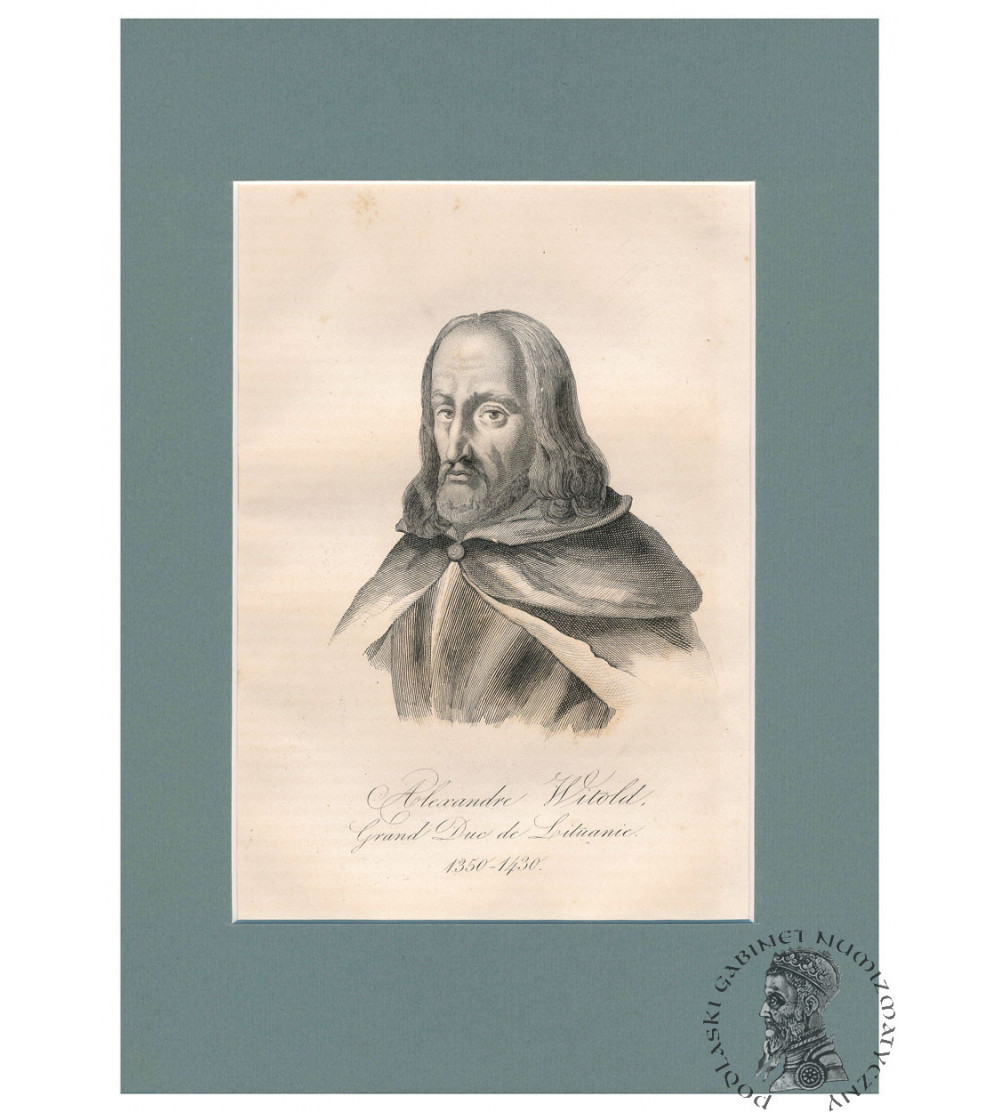




Vytautas Alexander Kiejstutowicz, Grand Duke of Lithuania, Alexandre Witold, Grand Duc de Lituanie 1350–1430, portrait, steel engraving 19th century, work from Leonard Chodźko's volume - La Pologne historique, litteraire, monumentale et ilustree, Paris 1839-1841, all A4 format (passe-partout), image dimensions 14 cm x 20 cm, very good condition.
Vytautas Kiejstutowicz, godfather name Alexander (formerly Catholic Wigand), born 1354 or 1355 in Trakai (?), died. October 27, 1430 in Trakai) - Lithuanian prince from the family of Gediminovich, in 1384-1389 prince of Grodno, Brest, Sura, Drohiczyn, Volkovysk, Kamenets, in 1392-1401 governor of Lithuania, from 1401 Grand Duke of Lithuania (Magnus Dux), son of Kiejstut and priestess Biruta, cousin of King Wladyslaw II Jagiello. He took part in battles against Moscow, the Golden Horde and the Teutonic Knights, as well as in the struggle for dominion in Lithuania. His policy, both as governor of Lithuania and as Grand Duke, of consolidating Lithuania as an independent and strong state was at odds with that of his cousin, King Wladyslaw Jagiello of Poland, who intended to make Lithuania a "Polish province." In Jan Długosz's chronicle, the picture of Vytautas is remarkably positive, and he is also called pater patriae of Lithuania by the chronicler. source: wikipedia.com
CHODŹKO, Leonard Borejko (1800-1871), La Pologne historique, litteraire et monumentale, (...), 1835-1842. A monumental work by the famous Polish émigré publisher Leonard Chodźko which is a history and geographic-political description of Poland. The work was published in three volumes. The first part is the history of Poland from the earliest times to the reign of Wladyslaw Lokietek. The second volume covers the history of Poland from the reign of Casimir the Great to the death of Stefan Batory, while the last volume covers the history of Poland from the beginning of the reign of Sigismund III Vasa until the events contemporary to the Author and the Readers, i.e. the November Uprising. Each part also contains descriptions of unique and interesting places in Poland, as well as basic information about literature, art and science. In addition, the work contains examples of exceptional monuments in the Polish lands. An important part of the work includes fairy tales, legends and short stories, as well as an essay on dramatic theater in Poland. The work also contains a description of Polish dances, such as the polonaise, mazurka, and krakowiak. The work is very richly illustrated, with numerous intaglios, natural monuments, sacred objects, castles, palaces, cities, portraits of important historical figures from the history of Poland, works of art, notes of songs, etc. This brings the total to 180 engravings (including maps), in a set of three volumes, i.e. 60 engravings for each volume collated with a table at the beginning of the volume.